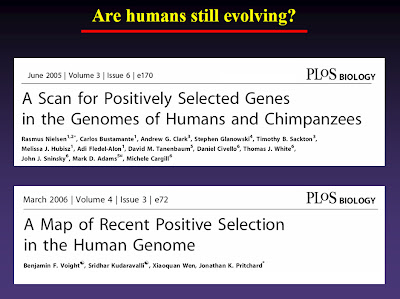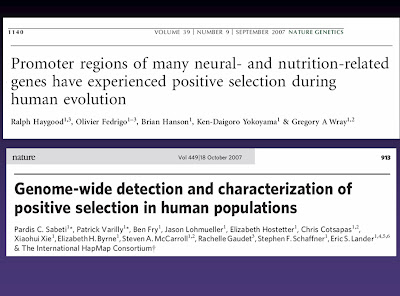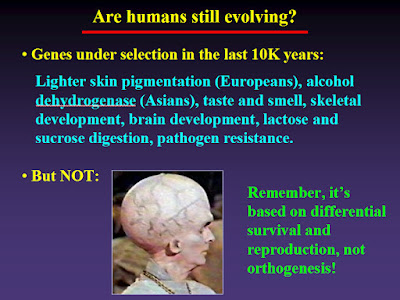Matt Ridley, author of such books as The Red Queen, Genome, and The Origins of Virtue (and not to be confused with biologist Mark Ridley), asks the question “Will we clone a dinosaur?” in Time Magazine. His answer, at least in terms of the Jurassic Park sense of cloning a dinosaur from ancient DNA, is either “no” or “definitely not”.
Yet, Ridley argues for a different possible revival of dinosaur-like animals, ones built through genetic engineering. He notes three things that he considers encouraging in this regard. The first is that dinosaurs aren’t really extinct, or at least that they did leave a diverse line of descendants — namely birds. Second, important regulatory genes, such as the Hox genes that play a major role in directing development, are generally quite conserved across animal lineages. No doubt, the third will be of particular interest to readers of this blog and indeed Ridley singles it out:
Third, and most exciting, geneticists are finding many “pseudogenes” in human and animal DNA–copies of old, discarded genes. It’s a bit like finding the manual for a typewriter bound into the back of the manual for your latest word-processing software. There may be a lot of interesting obsolete instructions hidden in our genes.
Put these three premises together, and the implication is clear: the dino genes are still out there.
I remember an episode of Star Trek – The Next Generation in which the introns of the crew members’ genomes were “reactivated”, and this caused them to de-evolve through various stages in their species’ ancestries. Of course, introns include various types of DNA sequence, most of which are probably not something that could be activated in any sense. The writers probably meant to focus on pseudogenes, as Ridley did.
Pseudogenes are duplicates of protein-coding genes that either maintain the intron/exon structure of the original gene (classical pseudogenes) or lack introns because they were inserted retroactively from an RNA transcript (processed pseudogenes) — either way, they are defined by two characteristics: 1) their obvious similarity to and derivation from protein-coding genes, and 2) the fact that they no longer function in coding for a protein.
Pseudogenes can form at any time in the ancestry of a lineage, may be derived from a wide variety of genes, and may degrade by mutation or be partially deleted without consequence due to a relaxation of selection given that they no longer fulfill sequence-specific functions. Taken together, this means that it can be difficult to identify something as a pseudogene, let alone what the original sequence encoded and in which ancestor the duplication occurred. In other words, pseudogenes are not like an easily legible manual of a particular obsolete technology. They are a jumble of distorted and half-erased text from a manual that is continually being modified haphazardly.
______
Hat tip: Evolving Thoughts



